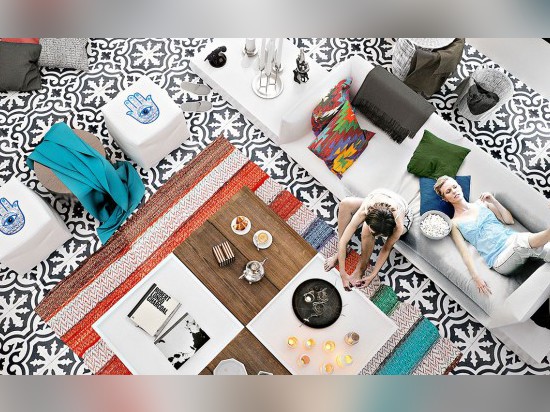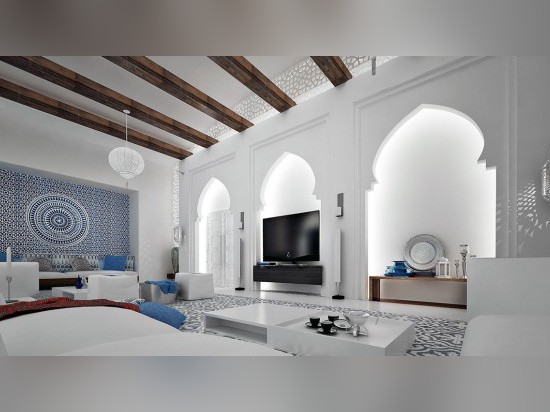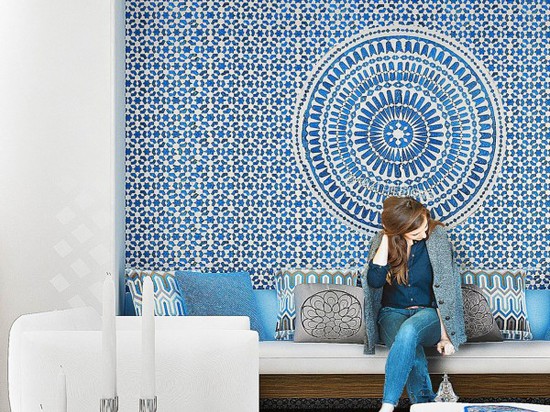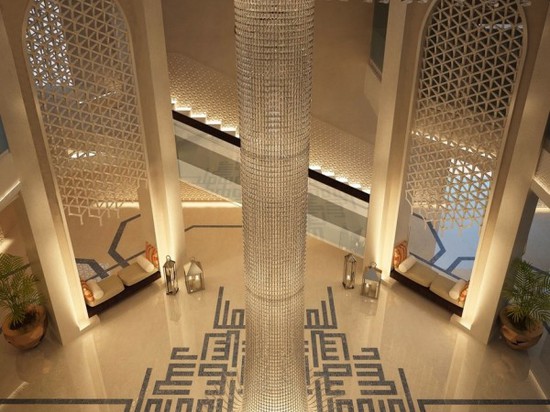
#RESIDENTIAL ARCHITECTURE PROJECTS
Moroccan Style Interior Design
Situated in Northern Africa, as one of the only three countries to have a coastline along both the Atlantic and Mediterranean, Morocco has often been the subject of lush and romantic fantasy. The country is extremely diverse, with residents that are Arab, Berber, and many European and sub-Saharan African immigrants
The interior design that originates in Morocco reflects this diverse area, rich in cultural traditions and history. Characterized by intricate carvings, arched doorways, and colorful fabrics, it should come as no surprise that Moroccan interior design has become quite popular around the world. The images in this post are representative of some of the most stunning and vibrant modern examples of Moroccan interiors, both in and outside of the country itself.
Much of what can be described as Moroccan interior design has its origins in Moorish architecture.
Moorish architecture was quite common and continues to be seen throughout the Arab regions of North Africa as well as on the Iberian Peninsula.
Some of the most common characteristics of Moorish architecture including arches, domes, courtyards, and decorative tile work, all of which are well represented in the homes included here.
This particular house is rich with Moroccan details, but also draws inspirations from the simplicity of Scandinavian design, despite the fact that the home is actually situated in Doha, Qatar.
The design comes from the Mimar Interiors, and incorporates the stunning colors and contrast that are so common in Moroccan-inspired designs.
The horseshoe arches are extremely common in Moroccan design and are characterized by a large round arch atop a straighter, narrower doorway (or in this case, indentation). In fact, they may also be referred to as Moorish arches (or keyhole arches).
It is not unusual to find these types of arches in mosques. Here, they act as a lovely framing device for interesting art pieces.
The following images are also from the designers at Mimar Interiors, but represent more modern and varied takes on Moroccan styles.
Colorful textiles, from upholstery to wall hangings, can indicated Moroccan influence as well.
For the layman, it may indeed by archways that are most indicative of Moroccan design.
Any room or home with a peaked doorway can immediately be categorized as having at least some influence from Moroccan design.
Although not the most common arch found in Moroccan interior design, this equilateral archway, combined with the surrounding interior elements, is certainly notable.
Riads are an extremely notable and gorgeous aspect of Moroccan design and architecture.
The term “riad” can refer either to a palatial house, or to the house’s interior garden or courtyard.
A Moroccan riad is usually characterized by an elaborately carved skylights that were open to the air.
This decidedly modern bathroom uses the Moroccan style as a jumping off point for contemporary decor. The archway, for instance, is a classic example of the Moroccan look, but instead of using brightly colored tile mosaics, here we see flashy silver.
Here, the use of interior plantings in the center of the room is clearly a reference to the riad design.
It is interesting to note that the concept of riads was originally due to Muslim influence. Since women were generally not allowed outside of the home alone, they could relax and enjoy an interior garden such as a riad without compromising their faith and modesty.
Apart from religious issues, a riad also provides climate control for homes in areas like Morocco that can be punishingly hot. The open air and water features commonly found there can have a pleasant cooling effect on the rest of the home.
In modern Moroccan design, colorful cushions on the floor have been replaced with cozy sofas that sit low to the ground but still offer support.
This skylight is a more traditional example of the riad design.
Muqarans are another common and intricate element included in many Moroccan designs.
This types of decorations can be made from brick, stone, stucco, or wood and common in palaces and mosques as well as luxury homes.
The ceiling here is a subtle reference to this style while managing to blend into an entirely modern space.
The elaborate archways in this room defy categorization, but are clearly Moroccan-inspired with splashes of lovely turquoise.
Also from Amine El Hammoumi, this loft uses intricate carvings and rich textiles to evoke the Moroccan spirit.
This home, from designer Kenan Osman, is a sleek and modern take on the Moroccan style.
The tilework and archways bring the lush history of Moroccan design into the modern space.
This final home is one of the most elaborate and fuses both classical and Moroccan elements.
The water feature room divider and detailed ceiling could easily be Moroccan and even riad-inspired.
The floral patterns in this Moroccan space from designer Amine El Hammoumi give it a feminine bent.





